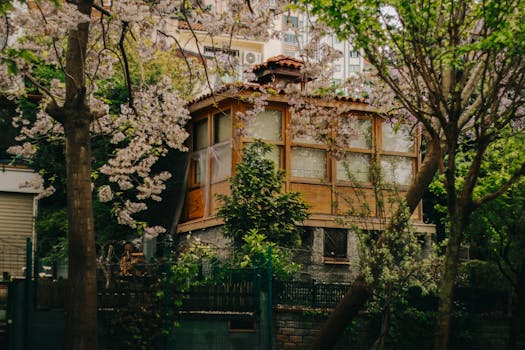
Urban Green Spaces: The Future of Outdoor Living in European Cities by 2025
Urban Green Spaces: The Future of Outdoor Living in European Cities by 2025 is a concept that has been gaining popularity in recent years. As the world becomes increasingly urbanized, the need for green spaces in cities has never been more pressing. In this article, we will explore the importance of urban green spaces and how they will shape the future of outdoor living in European cities by 2025.
Introduction to Urban Green Spaces
Urban green spaces refer to areas in cities that are dedicated to parks, gardens, and other green areas. These spaces are essential for maintaining the physical and mental health of urban residents, as well as providing a sustainable and environmentally friendly way to manage urbanization. Urban green spaces can take many forms, including parks, gardens, green roofs, and green walls.
The Benefits of Urban Green Spaces
The benefits of urban green spaces are numerous. Some of the most significant advantages include:
- Improved air quality: Urban green spaces can help to purify the air by absorbing pollutants and producing oxygen.
- Reduced noise pollution: Green spaces can act as a buffer against noise pollution, creating a more peaceful environment for residents.
- Increased biodiversity: Urban green spaces can provide a habitat for wildlife, helping to maintain biodiversity in urban areas.
- Enhanced mental health: Spending time in green spaces has been shown to have a positive impact on mental health, reducing stress and anxiety.
- Support for physical activity: Urban green spaces can provide opportunities for physical activity, such as walking, cycling, and sports.
The Future of Outdoor Living in European Cities
As we look to the future, it is clear that urban green spaces will play a vital role in shaping the future of outdoor living in European cities. By 2025, we can expect to see a significant increase in the number of urban green spaces, as well as a shift towards more sustainable and innovative designs. Some of the trends that we can expect to see include:
- Green roofs and walls: These will become increasingly popular as a way to incorporate green spaces into urban buildings.
- Vertical farming: This will become a more common practice, allowing for the production of fresh produce in urban areas.
- Community-led initiatives: Community-led initiatives will become more prevalent, with residents taking an active role in designing and maintaining urban green spaces.
- Smart gardens: These will use technology to optimize garden design, irrigation, and maintenance, making it easier to create and maintain green spaces.
Case Studies of Successful Urban Green Spaces
There are many successful examples of urban green spaces in European cities. Some of the most notable include:
- The High Line in London: This is a former rail line that has been converted into a park, providing a unique green space in the heart of the city.
- The Park de la Ciutadella in Barcelona: This is a large public park that provides a peaceful oasis in the midst of the bustling city.
- The Prater in Vienna: This is a large public park that offers a range of recreational activities, including cycling, boating, and sports.
Conclusion
In conclusion, urban green spaces are essential for maintaining the physical and mental health of urban residents, as well as providing a sustainable and environmentally friendly way to manage urbanization. As we look to the future, it is clear that these spaces will play a vital role in shaping the future of outdoor living in European cities. By incorporating innovative designs, sustainable practices, and community-led initiatives, we can create urban green spaces that are not only beautiful but also functional and beneficial to residents.






